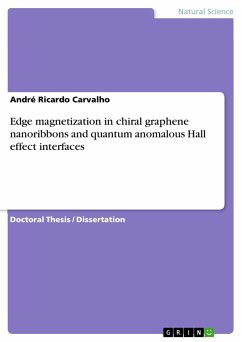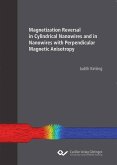Doctoral Thesis / Dissertation from the year 2015 in the subject Physics - Other, , course: Graphene, language: English, abstract: This thesis is composed of two theoretical studies related to properties of edge states in nanostructures of graphene monolayers.In the first one, we analyze the magnetic properties of chiral graphene nanoribbons. Chiral edges corresponds to a symmetry property whose mirror image cannot be superposed on to the original one, inversely of an achiral. There are only two cases of achiral nanoribbon: armchair or zigzag edges. Chiral graphene nanoribbons, as well as those with zigzag edges, have localized states that favour to edge magnetization.In our analysis we use the tight-binging (TB) model with an electron-electron Hubbard mean-field interaction term. We show that only the standard tight-binding model with nearest-neighbor hopping is not sufficient to describe the low-energy and magnetic properties of graphene nanoribbons, i.e., the inclusion of next-nearest-neighbor hopping terms is necessary for an accurate modeling. We compare the results from our model with recent data from scanning tunneling spectroscopy and propose a new interpretation for the peaks experimentally observed in the local density of states.The second subject of this thesis corresponds to a study in progress of conducting states from the quantum anomalous Hall effect (QAHE) in graphene in the presence of a periodic exchange field and a Rashba spin-orbit interaction. We call interfaces the point where two systems meet, in this case, a system with positive sign in the exchange field interaction (EF) meet the analogous system with negative sign in the EF. The conducting states appear at the point of meet: gapless interfaces states.To this end, we analyze the formation of gapless states in the change of the sign from exchange field parameter in graphene with Rashba spin-orbit interaction. While the system in QAHE with a constant sign in exchange field has energy gap separating the highest occupied electronic band from the lowest empty band our results shows that the possibility of tunable exchange field sign creates conducting interfaces states, remaining a bulk energy gap.
Hinweis: Dieser Artikel kann nur an eine deutsche Lieferadresse ausgeliefert werden.
Hinweis: Dieser Artikel kann nur an eine deutsche Lieferadresse ausgeliefert werden.







